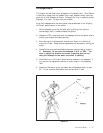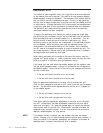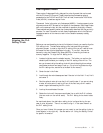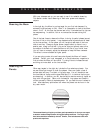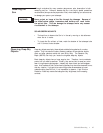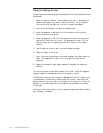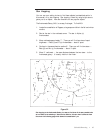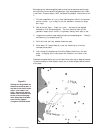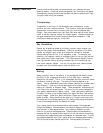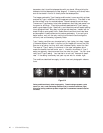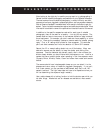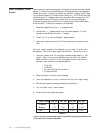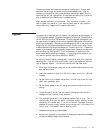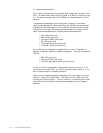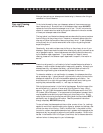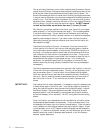
Celestial Observing • 45
Viewing conditions affect what you can see through your telescope during an
observing session. Conditions include transparency, sky illumination, and seeing.
Understanding viewing conditions and the affect they have on observing will help
you get the most out of your telescope.
Transparency
Transparency is the clarity of the atmosphere and is affected by clouds,
moisture, and other airborne particles. Thick cumulus clouds are completely
opaque while cirrus can be thin, allowing the light from the brightest stars
through. Hazy skies absorb more light than clear skies making fainter objects
harder to see and reducing contrast on brighter objects. Aerosols ejected into
the upper atmosphere from volcanic eruptions also affect transparency. Ideal
conditions are when the night sky is inky black.
Sky Illumination
General sky brightening caused by the Moon, aurorae, natural airglow, and
light pollution greatly affect transparency. While not a problem for the Moon,
planets, and brighter stars, bright skies reduce the contrast of extended
nebulae making them difficult, if not impossible, to see. To maximize your
observing, limit deep-sky viewing to moonless nights far from the light polluted
skies found around major urban areas. LPR filters enhance deep-sky viewing
from light polluted areas by blocking unwanted light while transmitting light
from certain deep-sky objects. You can, on the other hand, observe planets
and stars from light polluted areas or when the Moon is out.
Seeing
Seeing conditions refer to the stability of the atmosphere and directly effects
the clarity of star images and the amount of fine detail seen in extended
objects like the planets. The air in our atmosphere acts as a lens which bends
and distorts incoming light rays. The amount of bending depends on air
density. Varying temperature layers have different densities and therefore bend
light differently. Light rays from the same object arrive slightly displaced
creating an imperfect or smeared image. These atmospheric disturbances vary
from time-to-time and place-to-place. The size of the air parcels compared to
your aperture determines the “seeing” quality. Under good seeing conditions,
fine detail is visible on the brighter planets like Jupiter and Mars, and stars are
pinpoint images. Under poor seeing conditions, images are blurred and stars
appear as blobs. Seeing conditions are rated on a five-point scale where one
is the worst and five is the best (see figure 5-4). Seeing conditions can be classified
in one of three categories which are based on the cause.
Type 1 seeing conditions are characterized by rapid changes in the image seen
through the telescope. Extended objects, like the Moon, appear to shimmer while
point sources (i.e., stars) appear double. Type 1 seeing is caused by currents
within or very close to the telescope tube. These currents could be caused by a
telescope that has not reached thermal equilibrium with the outdoor surroundings,
heat waves from people standing near the telescope, or heated dew caps. To avoid
the problems associated with Type 1 seeing, allow your telescope approximately
20 to 30 minutes to reach thermal equilibrium. Once adjusted to the outdoor
Viewing Conditions



